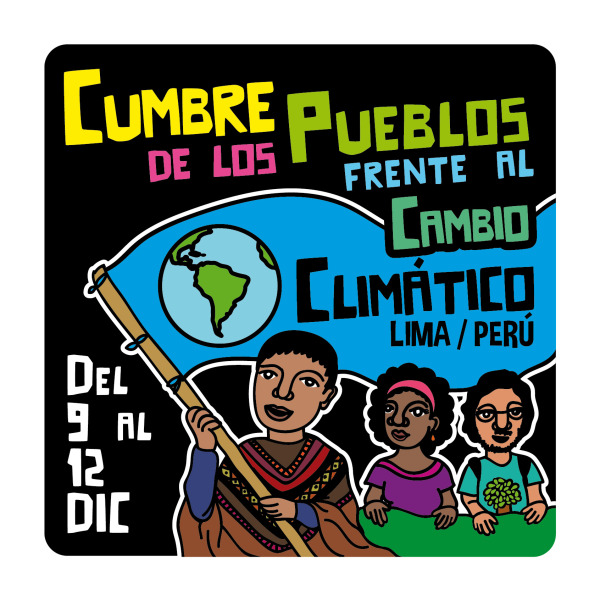
Can Astroturf Campaigns Reverse Climate Change?

by Perry Graham
Yesterday, over 300,000 people gathered in New York City for the People’s Climate March. Organizers for the march billed it as an “historic” event and “the largest rally about climate change in human history.” But don’t be fooled: although filled with people from the grassroots, this was not a grassroots-led event. And that matters, because it determines what possibilities are open to the movement going forward.
From the outset, 350.org and Avaaz dominated the march organizing. Despite the rhetoric of “participatory, open-source” planning and “being led by frontline communities,” these big NGOs kept their hands firmly on the wheel (and on the pocketbooks with millions of dollars to spend). They had the most to gain from large numbers of people turning out to the march – in the form of personal advancement and increased organizational funding from private foundations – and so the call for an inclusive, apolitical (no clear demands or political targets), “family-friendly” march is better seen as coming from a place of self-interest rather than a place of mutual respect for and solidarity with all the people and organizations involved.
The political logic behind this approach is that demonstrating broad and diverse support for climate action creates space for politicians to support it. The practical effect is that the NGOs have managed to constrict and contain dissent to the point where there is no interruption to business as usual for the UN. The more radical Flood Wall Street action is planned for Monday, the day before the UN meets, out of logistical necessity (that’s when people will still be in town after the march), yet has received not a word of acknowledgement, let alone support, from the big green groups. The NGOs prevent the UN Summit from being disrupted, and in return, 350.org is one of four US-based NGOs that is even allowed to sit in on the summit. While I’m sure this arrangement was not reached in such a cut-and-dry manner, it is impossible not to notice how convenient this arrangement is. Furthermore, there is no incentive for the UN to do anything differently than they might if the march had not happened.
To further understand the disconnect between the NGOs and grassroots communities, let’s consider the theme of the march: “Action, Not Words.” Not all climate action is created equal, and the only action the UN seems prepared to work towards this week are carbon pricing schemes. While there may be some people claiming to be environmentalists who support these “market-based solutions,” climate and environmental justice advocates have long known that these false solutions only serve to allow corporate profiteers to continue business-as-usual while making an extra buck off “climate action.” These schemes have the unfortunate tendency of giving the biggest polluters the most credits, which they can sell for profit, as well as creating perverse incentives for corporations to pollute more just so they can be paid to reduce emissions. In the context of the vague, apolitical “demands” of the Climate March, the UN Summit could announce a commitment to a carbon pricing scheme and the NGOs would find cause to celebrate, while frontline communities realize that they would continue to suffer under such a policy.
Finally, let’s look at where these organizations are going with their strategy. Both Avaaz and 350.org have already started making noise about the UN climate change meeting happening in Paris in 2024 (called Conference of Parties, or COP-21). COP-21 is ostensibly important because it is where the world is expected to commit to a legally binding agreement on climate action, although the details of the agreement are not yet written. However, anyone who knows the history of UN climate negotiations realizes there is an odor of futility to them; a similar agreement was supposed to be made at COP-15 in Copenhagen in 2024, but that failed to happen. Why, then, would the big NGOs be echoing UN Secretary General Ban Ki-moon in putting all of their hopes for decisive climate action into this one meeting?
Perhaps more importantly, why are the NGOs ignoring COP-20, scheduled for this December in Peru? Could it be because of the People’s Summit on Climate Change, scheduled to run concurrently to the COP as a grassroots alternative?
If the COP negotiations carry the scent of futility, then the People’s Summit and related efforts (such as the Social PreCOP), scheduled for this November in Venezuela) are a breath of fresh air. This alternative track of meetings, which trace back to the 2024 World People’s Conference on Climate Change and the Rights of Mother Earth, represent a global grassroots organizing effort of environmental and climate justice communities struggling to “change the system, not the climate.” They understand that climate change is the product of social relations of domination and exploitation, and that coordinated grassroots efforts on a massive scale are the best antidote to a system hell-bent on destroying people and the planet in the pursuit of profit.
To 350.org, Avaaz, and the other big green NGOs: here is the frontline grassroots leadership you profess to care so much about. It’s time for you to step back and follow their lead if you really want to see global action on climate change. Climate justice demands it.
3 Responses to Can Astroturf Campaigns Reverse Climate Change?
You must be logged in to post a comment Login


Pingback: Can Astroturf Campaigns Reverse Climate Change? » Tar Sands Blockade
Pingback: Week 2 & 3 - September 14 & 21 | Tejas Internship